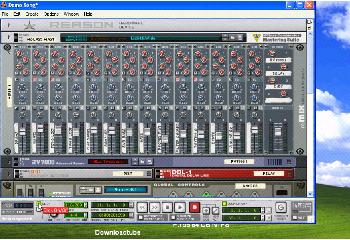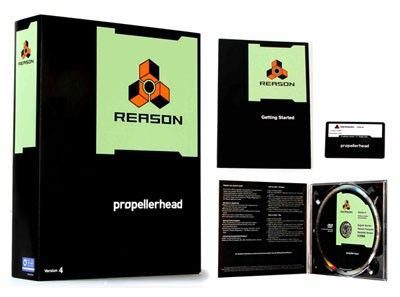There are many underlying causes of a stiff back and knowing the short list of possible causes of your back stiffness will help you have a more productive discussion with your doctor.
Back pain accompanied by unexplained weight loss requires immediate medical attention.
Read:Lower Back Pain Symptoms, Diagnosis, and Treatment
Here are 4 common underlying causes of back stiffness with or without pain:
Reason is a powerful collection of virtual instruments, effects and music production tools where musical ideas and amazing sounds comes to life. Available as a VST plugin or in Reason standalone. Sitting with your spine curved forward. When you sit for a long time, the following changes occur in your spine: Increased pressure within each spinal segment 3. Reduced strength in the muscles of your upper and lower back 3,4. Decreased nutrient supply to the spinal tissues 3. Symbol or chart period has been changed. Chart has been closed. Input parameters have been changed by a user. Another account has been activated or reconnection to the trade server has occurred due to changes in the account settings.
1. Tight muscles in your thighs and hips
Tightness in certain groups of muscles in your thighs and/or hips may alter the biomechanics of your spine. Common examples are:
Tight hamstrings
Your hamstring muscles run through the back of each of your thighs. These large and powerful group of muscles can become tight for a number of reasons, including physical inactivity or a lack of stretching before and/or after working out.

See Easy Hamstring Stretches
When your hamstrings are tight, they become shorter. These changes can affect the curvature of the lower part of your spine, disrupting the alignment of the spine with the pelvis (hip). As a result, you may feel stiffness in your lower back with or without pain. The stiffness is usually more pronounced when you bend your spine forward.1
Targeted hamstring stretching can gradually lengthen your hamstrings and relieve lower back stiffness.
Tight hip flexors
The iliopsoas muscle in your hip allows you to lift your thigh and bring it close to your body. This action is called flexion of the hip.
Tightness in the iliopsoas muscle can create stiffness within the segments of your spine. In severe iliopsoas tightness, spinal instability may occur. It is also possible for the surrounding spinal tissues to get inflamed and irritated, generating pain.2
See Back Muscles and Low Back Pain
Pressure on the spine can be relieved by stretches that help in lengthening the hip flexors.
2. Sitting with your spine curved forward
When you sit for a long time, the following changes occur in your spine:
- Increased pressure within each spinal segment3
- Reduced strength in the muscles of your upper and lower back3,4
- Decreased nutrient supply to the spinal tissues3
When you sit on the edge of your chair or hunch towards your computer, the strain on your spine is more—and can cause stiffness and pain.
See Identifying Incorrect Posture
A sedentary lifestyle can exacerbate these changes, causing spinal stiffness to develop within an hour of sitting.4
To avoid back stiffness, use an upright sitting posture. Roll your shoulders back with the ears over the shoulders and the upper arms parallel to your torso. While sitting in an office chair try to avoid constant use of the backrest and sit upright to activate your core muscles.
See Posture to Straighten Your Back
3. Inflammatory changes in your spine
Inflammation can cause the joints in your spine to become less flexible and/or fuse, resulting in stiffness. Two common examples are:
Ankylosing spondylitis
When spinal inflammation results in the gradual fusion between adjacent vertebrae, it is called ankylosing spondylitis. The condition causes progressive stiffness and chronic pain in the upper and/or lower back.5
The stiffness usually improves with exercise and does not improve with rest.5
Osteoarthritis
Osteoarthritis is the breakdown of the protective cartilage between the facet joints at the back of your spine. As a result, your joints create more friction upon movement, causing pain and stiffness.
The stiffness is usually present in the morning, tends to ease with movements during the day, and peaks again after long periods of inactivity or rest.
Both ankylosing spondylitis and spinal osteoarthritis can be treated with medication, exercise, and lifestyle changes.
4. Dehydration and shrinkage of your spinal discs
Your spinal discs are shock-absorbing pads between your vertebrae that distribute loads within your spine. Age-related changes can cause degeneration in these discs, altering their biomechanics.6
When a disc degenerates, there is a breakdown in its fibrocartilage component, loss of water, and a decrease in its height. These changes can cause spinal stiffness, especially during bending movements.7
Reason 442 Failed To Enable Virtual Adapter
See Lumbar Degenerative Disc Disease (DDD)
Treatment usually includes physical therapy, exercise, medications, and losing weight (if applicable). Rarely, surgery may be recommended.
See Lumbar Degenerative Disc Disease Treatment
If you experience back stiffness that does not resolve with self-care and/or affects your daily activities, talk to your doctor. A doctor can help identify the cause of your back stiffness and formulate a treatment plan for the underlying condition.
Learn more:

Reason 4 Software
References
Reason 4 Life Uncopylocked
- 1.Jandre Reis FJ, Macedo AR. Influence of Hamstring Tightness in Pelvic, Lumbar and Trunk Range of Motion in Low Back Pain and Asymptomatic Volunteers during Forward Bending. Asian Spine J. 2015;9(4):535–540. doi:10.4184/asj.2015.9.4.535
- 2.Avrahami D, Potvin JR. The clinical and biomechanical effects of fascial-muscular lengthening therapy on tight hip flexor patients with and without low back pain. J Can Chiropr Assoc. 2014;58(4):444–455.
- 3.Gupta N, Christiansen CS, Hallman DM, Korshøj M, Carneiro IG, Holtermann A. Is objectively measured sitting time associated with low back pain? A cross-sectional investigation in the NOMAD study. PLoS One. 2015;10(3):e0121159. Published 2015 Mar 25. doi:10.1371/journal.pone.0121159
- 4.Heneghan NR, Baker G, Thomas K, Falla D, Rushton A. What is the effect of prolonged sitting and physical activity on thoracic spine mobility? An observational study of young adults in a UK university setting. BMJ Open. 2018;8(5):e019371. Published 2018 May 5. doi:10.1136/bmjopen-2017-019371
- 5.Wenker KJ, Quint JM. Ankylosing Spondylitis. [Updated 2018 Nov 14]. In: StatPearls [Internet]. Treasure Island (FL): StatPearls Publishing; 2019 Jan-. Available from: https://www.ncbi.nlm.nih.gov/books/NBK470173/
- 6.Newell N, Little J, Christou A, Adams M, Adam C, Masouros S. Biomechanics of the human intervertebral disc: A review of testing techniques and results. Journal of the Mechanical Behavior of Biomedical Materials. 2017;69:420-434. doi:10.1016/j.jmbbm.2017.01.037
- 7.Zirbel SA, Stolworthy DK, Howell LL, Bowden AE. Intervertebral disc degeneration alters lumbar spine segmental stiffness in all modes of loading under a compressive follower load. The Spine Journal. 2013;13(9):1134-1147. doi:10.1016/j.spinee.2013.02.010